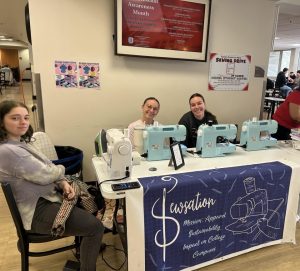The number of students seeking financial aid in the weather-beaten economy has increased across the country, but Bradley’s hasn’t seen such an increase.
A survey released recently by the National Association for College Admission Counseling revealed nearly 90 percent of colleges and universities saw an increase in financial aid applications during the last admissions cycle.
However, Bradley doesn’t exactly fit that statistic, said Director of Financial Assistance Dave Pardieck.
While applications for the FAFSA increased with the current freshmen class, Pardieck said this increase corresponds to a similar increase in admissions overall.
“It’s hard to measure if the increase in financial aid applications was economy-related,” he said. “The increases in both categories were proportional.”
About 65 percent of freshmen admitted in 2009 applied for financial aid, a slight increase from last year’s number of about 62.5 percent, Pardieck said. But since this year’s freshmen class was larger than last year’s, so the increase wasn’t unexpected.
And Pardieck said the “dramatically bigger” freshmen class is a sign that Bradley’s enrollment goal wasn’t weighed by the economic slowdown.
“I think we did proportionally better in the market because of the recession,” he said. “It’s because of our generous financial aid and a host of other factors,” including more aggressive recruiting techniques, modified visit programs and a strengthened “Bradley Brand.”
The NACAC survey indicated almost half of the institutions included in the survey reported increases in their freshmen enrollment.
Before the Great Recession, Pardieck said on average, about 50 percent of applicants and 90 percent of enrolled students fill out the FAFSA each year.
Despite the sagging economy, “those ratios stayed about the same,” Pardieck said. He added that private schools often see a large percentage of applicants who have filled out the FAFSA.
“So even with the economic downturn, we wouldn’t anticipate a serious increase in applicants filling out the FAFSA, since so many of them already apply [because Bradley is private],” Pardieck said.
This situation held true for junior mechanical engineering major Brandon Keeney, who said he relies on government grants, Bradley-sponsored grants and scholarships and private scholarships to pay for his education.
“I don’t think the recession impacted [my financial need,] he said. “I actually think I received more money when the recession hit.”
Junior elementary education major Roxanne Geier also said she receives financial aid from a few different sources and the economic situation doesn’t make a difference in the amount of money she needs.
“The recession hasn’t affected the amount of financial assistance I need and it hasn’t personally affected my income or my parents’ income, but it has affected the amount of assistance I have received,” she said.
Pardieck said Bradley has not received any significant funding increases to “self-help” financial aid, such as work study programs, in 2009-10. He also said demand for the largest federal student loan program, the Stafford Loan, is “running similar to last year.”
Bradley-funded financial assistance has increased year-over-year by slightly more than $2.5 million, Pardieck said.




